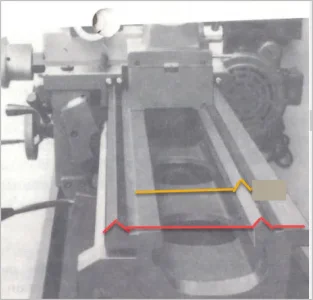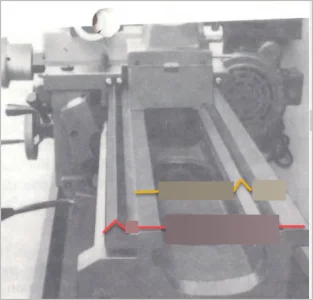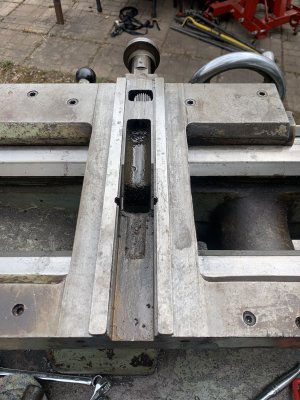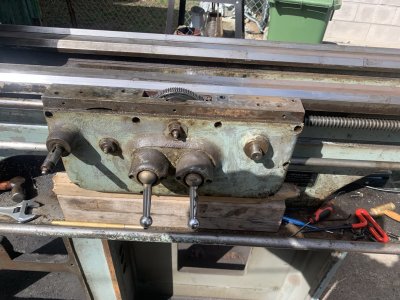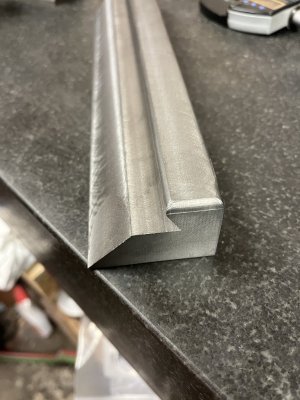I think you have to have more than 20 thou with Moglice, 60 thou minimum recommended. Most would do the same or more for Turcite as well so there is enough depth to put in oil grooves. Gotta have oil grooves.
You could pour moglice to get the right height, however you'd have to mill away material from the bottom of all mating parts. Needs to be a rough surface as well. With Turcite you still have to scrape it, moglice can be poured with things position perfectly but needs flaking afterward.
SOP is after you grind (or scrape) a bed, you scrape the parts into it for bearing and alignment. That is really what these materials are for; creating proper mating surfaces and avoid scraping the mating part. They could be used to get the right height, but its a lot of work. I'd be more thinking about getting things mating and aligned, thats the hard part....height can usually be changed mechanically; .
On the topic, Turcite and Moglice have some disadvantages. Crap gets embedded in it and it ends up accelerating wear. Its a great commercial solution to get more life out of a machine and minimize the bill of the reconditioning guy. However, in my opinion, its not the solution for that best of breed lathe you want to have in a near perfect state for the rest of your days. I wouldn't say I'd never use them, but doing so requires a lot of finicky prep work (say, milling out the bottom of the headstock) to it and embedding is a real issue. You'd have to put in some fancy wipers to minimize that.
It's your lathe (and back and shoulders lol), but its such a beauty and you're already having biggest part of the job done (bed grinding), you might want to eliminate the rest of the wear. Tailstock quill and bore, HS & TS alignment, cross feed and so on. You'd end up with a best of breed toolroom lathe giving factory new performance
You could pour moglice to get the right height, however you'd have to mill away material from the bottom of all mating parts. Needs to be a rough surface as well. With Turcite you still have to scrape it, moglice can be poured with things position perfectly but needs flaking afterward.
SOP is after you grind (or scrape) a bed, you scrape the parts into it for bearing and alignment. That is really what these materials are for; creating proper mating surfaces and avoid scraping the mating part. They could be used to get the right height, but its a lot of work. I'd be more thinking about getting things mating and aligned, thats the hard part....height can usually be changed mechanically; .
On the topic, Turcite and Moglice have some disadvantages. Crap gets embedded in it and it ends up accelerating wear. Its a great commercial solution to get more life out of a machine and minimize the bill of the reconditioning guy. However, in my opinion, its not the solution for that best of breed lathe you want to have in a near perfect state for the rest of your days. I wouldn't say I'd never use them, but doing so requires a lot of finicky prep work (say, milling out the bottom of the headstock) to it and embedding is a real issue. You'd have to put in some fancy wipers to minimize that.
It's your lathe (and back and shoulders lol), but its such a beauty and you're already having biggest part of the job done (bed grinding), you might want to eliminate the rest of the wear. Tailstock quill and bore, HS & TS alignment, cross feed and so on. You'd end up with a best of breed toolroom lathe giving factory new performance
Last edited:

